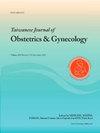优化低质量胚胎的冷冻胚胎移植:比较自然周期和激素治疗周期的结果-回顾性分析
IF 2.2
4区 医学
Q2 OBSTETRICS & GYNECOLOGY
引用次数: 0
摘要
本研究的目的是分析两种不同的冷冻胚胎移植(FET)方案:自然周期(NC-FET)和激素治疗周期(HT-FET)在患者初始FET周期内根据胚胎质量的临床结果的潜在差异。材料与方法对2010年1月至2020年10月在我院接受了1365次FET周期的970名女性进行了回顾性队列研究。排除数据缺失和多个FET周期的病例,最终分析包括670名妇女。其中121名妇女接受了NC-FET,而549名妇女在雌激素启动后接受了HT-FET。根据移植胚胎的质量将两组进一步分层为优质胚胎组和低质量胚胎组。采用Pearson’s卡方检验、Fisher’s精确检验、Student’st检验等统计学方法比较临床结局,包括植入率、临床妊娠率、活产率、流产率。采用Logistic回归分析估计NC-FET和HT-FET周期之间的调整优势比,同时考虑潜在的危险因素。结果NC-FET与HT-FET的临床结果无统计学差异。在调整了年龄、移植胚胎数量、妊娠和胎次等因素后,亚组分析显示,高质量胚胎患者的临床结果没有显著差异。高质量胚胎移植HT-FET组患者的着床率(45%,95% CI: 0.41-0.50)显著高于NC-FET组(34%,95% CI: 0.26-0.43; p = 0.034)。另一方面,NC-FET组低质量胚胎移植患者的活产率明显更高(调整优势比2.57,95% CI 1.12-5.91)。结论低质量胚胎选择NC-FET方案比HT-FET方案可获得更高的活产率。本文章由计算机程序翻译,如有差异,请以英文原文为准。
Optimizing frozen embryo transfer for low-quality embryos: Comparing outcomes in natural cycle and hormone therapy cycle - A retrospective analysis
Objective
The aim of this study is to analyze potential disparities in clinical outcomes in two distinct regimens of frozen embryo transfer (FET): the natural cycle (NC-FET) and hormone therapy cycle (HT-FET), within the initial FET cycle of patients, according to embryo quality.
Materials and Methods
A retrospective cohort study was conducted on 970 women who underwent a total of 1365 FET cycles at our hospital between January 2010 and October 2020. Excluding cases with missing data and multiple FET cycles, the final analysis included 670 women. Of these, 121 women underwent NC-FET, while 549 women received HT-FET after estrogen priming. The two groups were further stratified based on the quality of transferred embryos into a high-quality embryo group and a low-quality embryo group. Clinical outcomes including implantation rate, clinical pregnancy rate, live birth rate and miscarriage rate were compared using statistical analysis such as Pearson's Chi-square, Fisher's exact test, and Student's t-test. Logistic regression analysis was employed to estimate the adjusted odds ratio between NC-FET and HT-FET cycles, while accounting for potential risk factors.
Results
No statistically significant differences were observed in clinical outcomes between NC-FET and HT-FET. Subgroup analysis, after adjusting for age, number of transferred embryos, gravida, and parity, revealed no significant differences in clinical outcomes for patients with high-quality embryos. Patients transferred with high-quality embryos in HT-FET group exhibited a significantly higher implantation rate (45 %, 95 % CI: 0.41–0.50) than those in the NC-FET group (34 %, 95 % CI: 0.26–0.43; p = 0.034). On the other hand, patients transferred with low-quality embryos demonstrated a significantly higher live birth rate in the NC-FET group (adjusted odds ratio 2.57, 95 % CI 1.12–5.91).
Conclusion
Opting for NC-FET for low-quality embryos may yield a more favorable live birth rate compared to the HT-FET regimen.
求助全文
通过发布文献求助,成功后即可免费获取论文全文。
去求助
来源期刊

Taiwanese Journal of Obstetrics & Gynecology
OBSTETRICS & GYNECOLOGY-
CiteScore
3.60
自引率
23.80%
发文量
207
审稿时长
4-8 weeks
期刊介绍:
Taiwanese Journal of Obstetrics and Gynecology is a peer-reviewed journal and open access publishing editorials, reviews, original articles, short communications, case reports, research letters, correspondence and letters to the editor in the field of obstetrics and gynecology.
The aims of the journal are to:
1.Publish cutting-edge, innovative and topical research that addresses screening, diagnosis, management and care in women''s health
2.Deliver evidence-based information
3.Promote the sharing of clinical experience
4.Address women-related health promotion
The journal provides comprehensive coverage of topics in obstetrics & gynecology and women''s health including maternal-fetal medicine, reproductive endocrinology/infertility, and gynecologic oncology. Taiwan Association of Obstetrics and Gynecology.
 求助内容:
求助内容: 应助结果提醒方式:
应助结果提醒方式:


